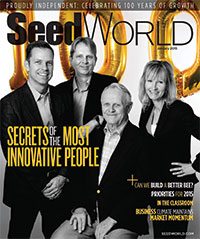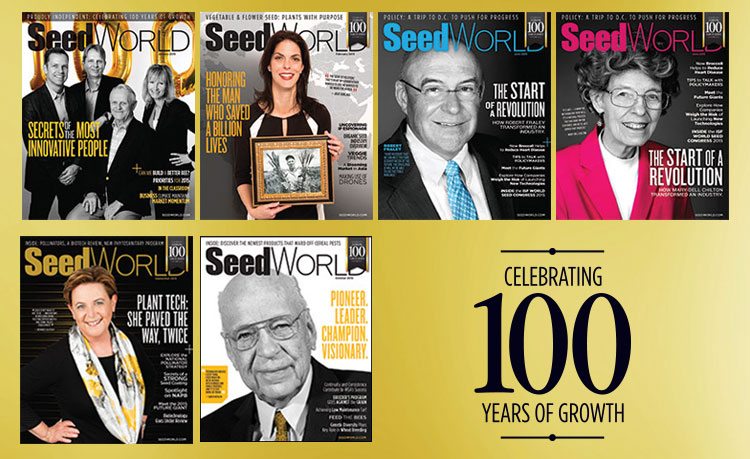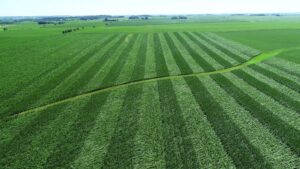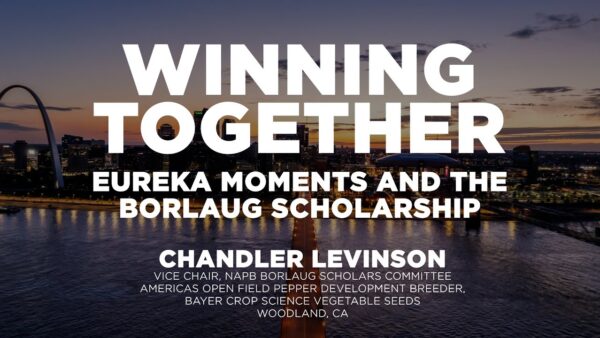2015 marks Seed World’s centennial milestone. That’s 100 years of covering the business news, regulatory news, people news, product news and issues of the seed industry. What a remarkable milestone!
One-hundred years ago, there were no computers, no biotechnology, no bioinformatics, no sensors for sorting and certainly no Internet. In fact, a great deal of the work done in the seed industry was still by hand, and the home garden sector accounted for a much larger share of the market than it does today.
When I think about the changes we’ve seen in agriculture and the seed industry during the past 100 years, it’s truly incredible and all due to the perseverance and ingenuity of America’s farmers, seedsmen, scientists and manufacturers.
While the dynamics of the industry have changed, along with the tools, technology and knowledge, the industry’s primary mission and issues have not. The goal: to provide farmers and ranchers with quality seed that maximizes every acre and helps to improve profitability. And the people who make up the seed industry have delivered.
Delivering Innovation
As part of the 2015 cover lineup, we celebrated six founders of the seed industry. These individuals have made significant contributions and include the likes of Harry Stine (January), Norman Borlaug (February), Mary-Dell Chilton and Robb Fraley (June), Bernice Slutsky (September) and Owen Newlin (October).
Perhaps, the seed industry’s most transformational person of the past 100 years is Norman Borlaug. His work to improve wheat varieties in Mexico, India an Africa sparked the Green Revolution. Because of his achievements and efforts to prevent hunger, famine and misery around the world, it is said that Borlaug has saved more lives than any other person who has ever lived.
Known for founding one of the first soybean breeding programs outside of a university, Stine has quietly built some of the most genetically robust and highest-yielding soybean seeds in the industry — and industry has noticed. It is reported that more than 80 percent of the soybeans on the market originate from Stine’s germplasm. Today, Stine Seed Farm and its affiliates own more than 800 patents of which 750 are directly related to soybeans.
In 1983, Chilton and Fraley, who worked independently of each other, each conducted groundbreaking molecular research on how plant bacterium could be adapted as a tool to insert genes from another organism into plant cells, which could produce new genetic lines with highly favorable traits. This furthered the field of science and helped propel agriculture forward. Thirteen years later, Fraley helped to lead the commercial launches of the genetically modified crops, Roundup Ready soybeans and Bollgard insect-protected cotton. Today, GMOs are grown by more than 18 million farmers in 28 different countries.
When it comes to shaping the policy around plant technologies such as GMOs, few people have been as influential as Bernice Slutsky. She’s been molding policy and how biotech events are handled from the time they receive regulatory approval for commercial use to how regulatory approvals are to be handled and/or maintained once an event’s patent expires.
On the business side of the seed industry, Owen Newlin stands as a legend. Through the years, he has developed the reputation as a highly-respected leader, a philanthropic pioneer and a champion for research and education. He also worked to give farmers a voice, helping to establish checkoff programs in eight key corn-producing states.
The next 100 years need to be just as remarkable. We need brilliant minds, new technologies and the right policies to meet the demands of the world. While I have no doubt the seed industry will deliver on its promise, we must continue to build on the successes of these individuals for an even better future. What will your mark be?














